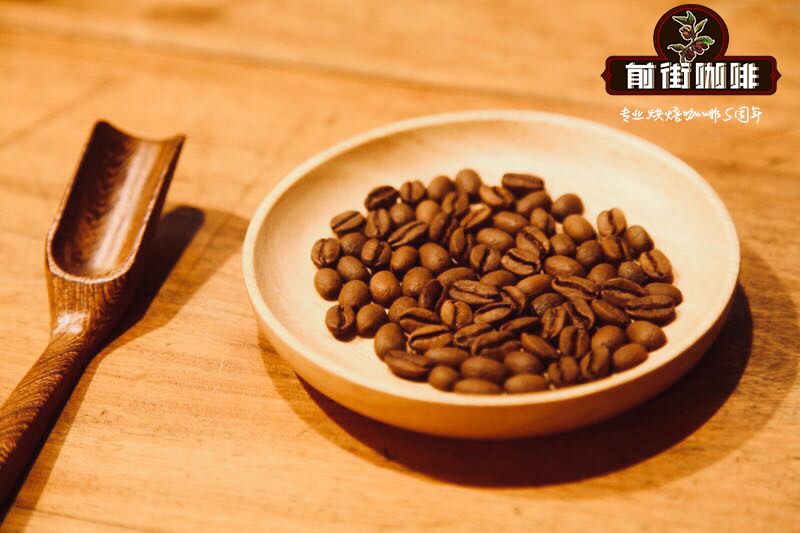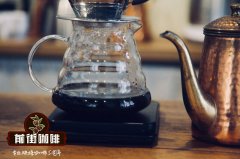An article to understand the common boutique bean flavor Daquan coffee beans and a complete record of the origin

Professional coffee knowledge exchange more coffee bean information please follow the coffee workshop (Wechat official account cafe_style)
Yunnan coffee bean varieties Typica and Bourbon
If you haven't developed a systematic understanding of coffee, coupled with choice difficulties. It is better to start with the following questions to understand your own needs and drink clear coffee. It is more suitable to use tools such as hand-dripping filtration and siphon pots to make, and it is suitable to choose individual coffee beans. For example, beans in Colombia tend to be fresh and balanced, beans in Indonesia tend to be sour and mellow, and beans in Ethiopia tend to have obvious flavor characteristics.
The choice of coffee is like an interesting game of hide-and-seek. Each caffeine variety and origin has different personalities. There are subtle differences in sour, bitter, sweet, aroma, mellow thickness and other flavors, and have their own strong personalities. But if you do not have the patience to taste them one by one, the following rules may allow you to find out the coffee varieties that suit your taste according to the map of your mood.
The "faction struggle" of coffee beans
According to the taste classification, coffee beans are divided into "sour pie", "bitter pie", "sweet pie", "neutral pie" and "mellow pie".
What is the flavor of coffee?
[coffee flavor Flavor] is the overall impression of aroma, acidity, bitterness, sweetness and mellowness, which can be used to describe the overall feeling of coffee. Acidity, wet aroma and alcohol thickness are all components of flavor, and it is their balance and homogenization that produce our overall sense of flavor.
Here are some typical flavor features:
Richness-refers to the overall flavor and taste of coffee beans
Complexity-the feeling of multiple flavors
Balance-all basic palate features are satisfactory, and no one taste masks the other.
[Acidity acidity]
It is the sour and strong quality of all the coffee grown on the plateau. Unlike bitterness or sour (sour), it has nothing to do with pH, but a refreshing and lively quality that promotes coffee to exert its functions of boosting the mind and clearing the taste.
[Body alcohol]
After drinking the coffee after conditioning, the taste of the coffee is left on the tongue. The change of mellowness can be as light as water to light, medium, high, fat, and even some Indonesian coffee is as thick as syrup.
[Aroma smell]
It refers to the smell and fragrance emitted by coffee after conditioning. Bouquet is a less commonly used word that specifically refers to the taste of ground coffee powder. Aroma is usually specific and comprehensive. The words used to describe Aroma include: caramel, carbon roasted, chocolate, fruit, grass, malt, rich, rich, spicy and so on.
[Bitter bitterness]
Bitterness is a basic sense of taste, and the sensory area is distributed at the base of the tongue. The bitterness of dark baking is deliberately created, but the most common cause of bitterness is too much coffee powder and too little water. Bitterness is not a consent word for sour.
[Bland light]
Coffee grown in the lowlands is usually quite light and tasteless. Coffee with insufficient powdered coffee and too much water will have the same light effect.
[Briny salty]
After brewing, if the coffee is overheated, it will produce a salty taste. The coffee in some coffee shops has this taste.
The flavor wheel of the American boutique coffee association and the flavor wheel of the counter-culture cafe
Americans have done a lot of work in this respect, and have made a good summary and summary of the taste of various coffee species at different roasting stages, as well as the flavor caused by various defects and improper roasting.
This is a table based on western food culture, such as blackcurrant, that is, blackcurrant, which is not a common taste in China, such as apricot flavor, which is actually similar to strawberry. Chinese prefer to describe strawberries, such as peaches, the American boutique coffee association, which has no income and is counter-cultural. No one can say that all the two pictures are numbered, it is the crystallization of collective wisdom.
The reason why there is such a difference is different cultural life, different food regions, different descriptions of the same compound, so coffee tasting, the most important thing is communication, say how you feel about this bean, culture is different, experience is different, description must be different, so communication can bring a lot of fun.
The types of balanced and mellow coffee beans are recommended:
For those who taste coffee for the first time, they can choose Central and South American coffee that is not sour, bitter, balanced and mellow.
[Santa Rita, Colombia] (deeply baked in water)-sucrose, clean, medium thickness, Santa Rita Manor, located in Antioquia, Colombia, treats coffee in the traditional way: picking coffee cherries by hand. Then the coffee fruit is washed and dried in a scaffolding. The environment around the Andes makes this coffee-growing area rich in volcanic soil and rich in water resources.
[Mantenin, Sumatra, Indonesia] (deep baking in traditional wet planing)-baked toast, nuts, pine, caramel, herbs, Lake dopa in Sumatra Province and Lake Tawa in Aceh all produce manning coffee. This is the famous "two lakes Shuangman".
[Costa Rican Tara bead Saint Roman] (deep baking in washing)-berries, caramel, cream, faint spices, St. Roman processing plant, mainly using water washing treatment, with strong taste. Coffee is famous for its rich and solid taste.
[Costa Rica Tara Pearl Diamond Hill Manor] (deeply baked in water)-soft orange notes, toast, caramel cocoa sweet, Diamond Villa is located in Tara Pearl producing area, coffee plant 1750m above sea level, 1850 meters above sea level, variety Red Catuai, manor owner Gutierrez family owns 50 hectares of coffee planting area.
[Panamanian Ireta Manor SHB Kaddura] (moderately roasted with water washing)-buttered bread, sweet apricot kernels, round acidity, Ireta Manor is one of the large Panamanian coffee plantations and one of the best Panamanian famous coffees.
[SHB Kaddura of La Tisa Manor, Panama] (deeply baked in water)-Black tea, fragrance of flowers, rich caramel, volcanic soil, high altitude, wet and rainy climate, and active volcanic activity have created the unique geographical conditions of the Farahan Plateau.
[San Juan Cheeto, Honduras] (deeply baked in water)-clean, roasted nuts, milk chocolate, very soft acidity, San Juan Sito coffee is grown in mountains 1450-1550 meters above sea level, shaded by bananas, avocados, papaya and other fruit trees, its climate and altitude are very conducive to the production of high-quality coffee beans.
[guava Plain Manor SL28, Guatemala] (deeply baked in the wine sun treatment)-pineapple, dried apricot fruit, red wine, guava Plain Manor added a batch of sun wine flavor, unique flavor, especially the SL28 variety is still a rare variety in Central America.
[Guatemala Vivette Nan Fruit] (moderately roasted in water)-nuts, dark chocolate and cut tobacco. Guatemala, which is famous for its highland topography, has a unique flavor of high-altitude hard beans that perform well in all-encompassing coffee producing areas. It also produces high-quality coffee with outstanding performance.
Types of coffee beans with mild acidity are recommended:
[Costa Rica Fire Phoenix Manor] (moderately roasted Red Honey)-dried fruit, vanilla, honey sweetness and delicate tropical fruit flavor, located in the fertile hills of the Poas volcano in the central valley of Costa Rica, is the first producer in Central and South America to produce honey-treated and sun-cured coffee.
[Panama Cupid Rosa content 30%] (moderately roasted by water washing)-clean and thorough body, aromas of white grape and caramel followed by honey, and charming aromas of alpine black tea. Boquete is the oldest and most famous coffee producing area in Panama. Coffee farmers use water washing and sun drying during the harvest season to make the coffee raw beans full and pure.
[Yechuefi aricha, Ethiopia] (light sun baking)-light fermented wine, sweet orange, spices, honey sweet, Aricha processing plant sun Ariga is the highest grade of G1 by ECX, from raw bean appearance, consistency, freshness to dry aroma and flavor are excellent.
[Yega Sherphine Woka, Ethiopia] (slightly roasted by water washing)-lemon, kumquat and white grape juice, the Waka Cooperative joins the famous Yejia Sheffield Coffee Farmers Cooperative Union to produce quality washing Ethiopia can reach the highest level of G1.
[Rwanda Muxiui processing plant bourbon seed] (washing medium baking)-red apples, cherries, cinnamon, honey, mainly produced by small farmers. [Mushonyi processing plant] has an amazing award record. In addition to winning the COE Excellence Cup in 2010, in 2011 alone, it won the championship in four batches, 12th, 16th and 28th!
[Sidamo 90+levelup Flower language] (light sun roasting)-rich aromas of berries, flowers, grapes and a variety of tropical fruits, Ninety plus is an internationally renowned coffee bean production and sales company, and is famous for providing rare and unique coffee beans, the top and unique representative of raw beans.
[Tanzania Kilimanjaro pearl beans] (moderately roasted in water)-apricot fruits, dates, spices, malt chocolate, red wine with soft acidity and pleasing low acidity, important producing areas in the mountains near Kenya in the north. Local coffee farmers grow between 1300 and 2000m above sea level, and their coffee flavor is different from that of neighboring Ethiopia and Kenya.
[PNG Chimere Manor, Papua New Guinea] (moderately roasted with water washing)-nuts, sugar, low acidity and solid, due to excellent growth conditions and stable quality control process of the processing plant, the coffee produced has an active sense of brightness and retains a considerable degree of flavor uniqueness of Papua New Guinea coffee.
[Ataisi Manor Pacamara in El Salvador] (washed moderately roasted)-Nuts chocolate, passion fruit, cream, strawberries, the national average of high altitude, such a geographical environment is very conducive to the growth of coffee, farmers use the traditional way of growing: almost 100% shade planting. Pacamara is the artificial breeding variety of Pacas and Maragogipe, and Pacamara is a rare excellent variety under artificial breeding.
Types of coffee beans
Important Notice :
前街咖啡 FrontStreet Coffee has moved to new addredd:
FrontStreet Coffee Address: 315,Donghua East Road,GuangZhou
Tel:020 38364473
- Prev

The difference of Flavor characteristics between Coffee Bean main producing area and Coffee Bean Variety
Professional coffee knowledge exchange more coffee bean information please follow the coffee workshop (Wechat official account cafe_style) Yunnan coffee bean varieties Typica and Bourbon coffee the original varieties are roughly divided into Elaraby plus (Arabica). Robasta
- Next

Appreciate the variety and taste of individual coffee from all over the world.
Professional coffee knowledge exchange more coffee bean information please follow the coffee workshop (Wechat official account cafe_style) Yunnan coffee bean varieties Typica and Bourbon coffee tree is a genus of Rubiaceae in botany. Coffee trees are native to subtropical Africa and some islands in southern Asia. In the 16th and 17th centuries, through Venice
Related
- Beginners will see the "Coffee pull flower" guide!
- What is the difference between ice blog purified milk and ordinary milk coffee?
- Why is the Philippines the largest producer of crops in Liberia?
- For coffee extraction, should the fine powder be retained?
- How does extracted espresso fill pressed powder? How much strength does it take to press the powder?
- How to make jasmine cold extract coffee? Is the jasmine + latte good?
- Will this little toy really make the coffee taste better? How does Lily Drip affect coffee extraction?
- Will the action of slapping the filter cup also affect coffee extraction?
- What's the difference between powder-to-water ratio and powder-to-liquid ratio?
- What is the Ethiopian local species? What does it have to do with Heirloom native species?

